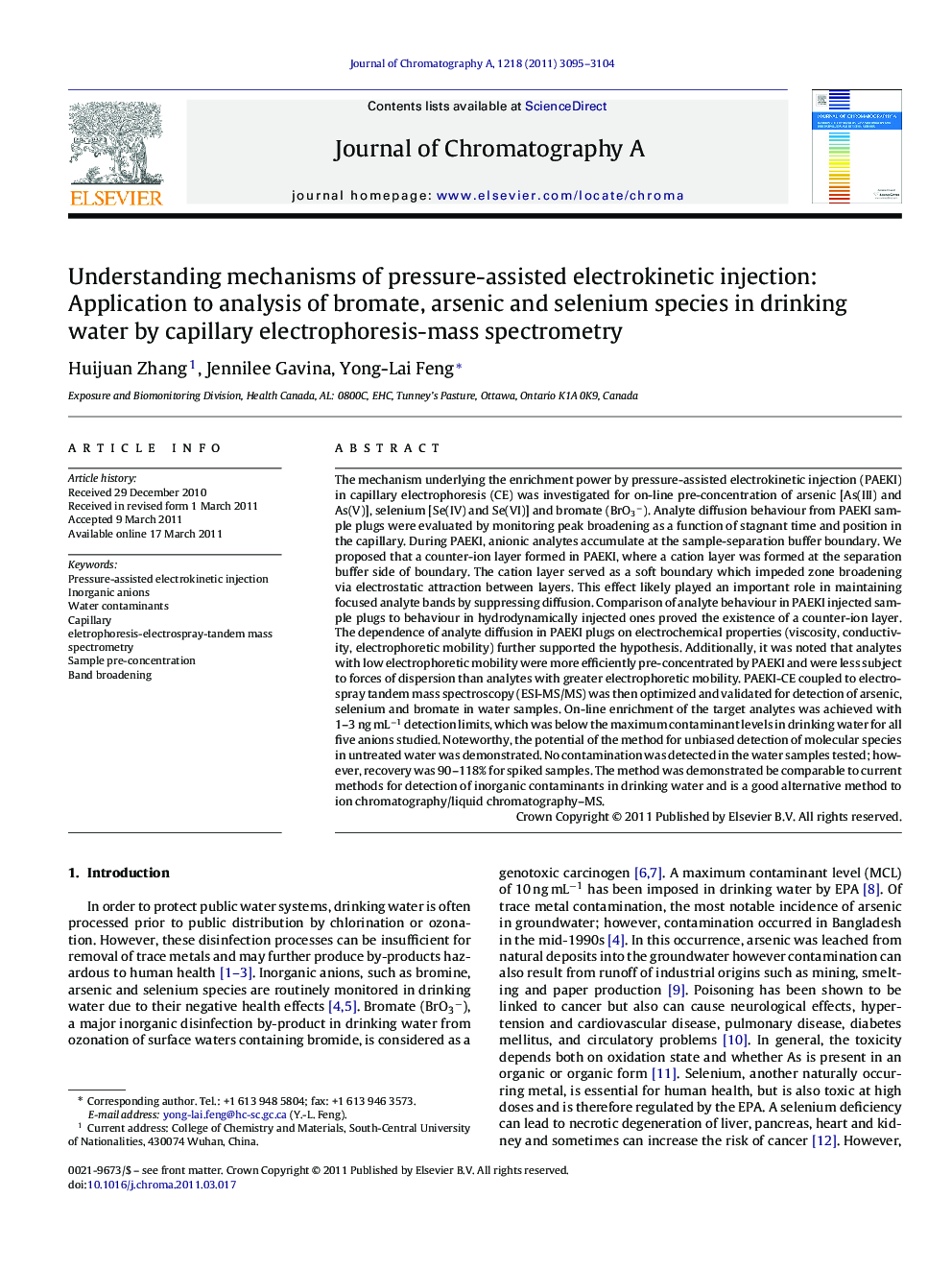| کد مقاله | کد نشریه | سال انتشار | مقاله انگلیسی | نسخه تمام متن |
|---|---|---|---|---|
| 1202214 | 965060 | 2011 | 10 صفحه PDF | دانلود رایگان |

The mechanism underlying the enrichment power by pressure-assisted electrokinetic injection (PAEKI) in capillary electrophoresis (CE) was investigated for on-line pre-concentration of arsenic [As(III) and As(V)], selenium [Se(IV) and Se(VI)] and bromate (BrO3−). Analyte diffusion behaviour from PAEKI sample plugs were evaluated by monitoring peak broadening as a function of stagnant time and position in the capillary. During PAEKI, anionic analytes accumulate at the sample-separation buffer boundary. We proposed that a counter-ion layer formed in PAEKI, where a cation layer was formed at the separation buffer side of boundary. The cation layer served as a soft boundary which impeded zone broadening via electrostatic attraction between layers. This effect likely played an important role in maintaining focused analyte bands by suppressing diffusion. Comparison of analyte behaviour in PAEKI injected sample plugs to behaviour in hydrodynamically injected ones proved the existence of a counter-ion layer. The dependence of analyte diffusion in PAEKI plugs on electrochemical properties (viscosity, conductivity, electrophoretic mobility) further supported the hypothesis. Additionally, it was noted that analytes with low electrophoretic mobility were more efficiently pre-concentrated by PAEKI and were less subject to forces of dispersion than analytes with greater electrophoretic mobility. PAEKI-CE coupled to electrospray tandem mass spectroscopy (ESI-MS/MS) was then optimized and validated for detection of arsenic, selenium and bromate in water samples. On-line enrichment of the target analytes was achieved with 1–3 ng mL−1 detection limits, which was below the maximum contaminant levels in drinking water for all five anions studied. Noteworthy, the potential of the method for unbiased detection of molecular species in untreated water was demonstrated. No contamination was detected in the water samples tested; however, recovery was 90–118% for spiked samples. The method was demonstrated be comparable to current methods for detection of inorganic contaminants in drinking water and is a good alternative method to ion chromatography/liquid chromatography–MS.
Journal: Journal of Chromatography A - Volume 1218, Issue 20, 20 May 2011, Pages 3095–3104